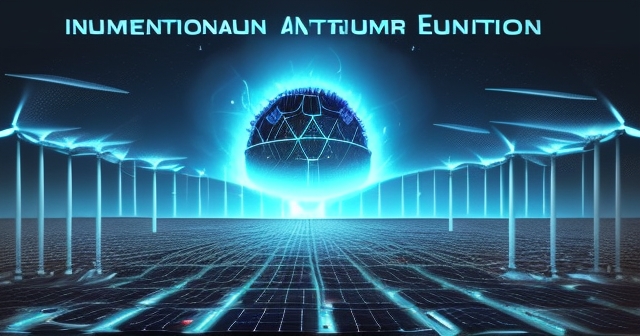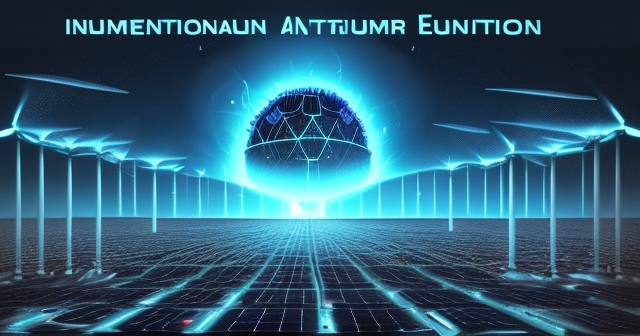Navigating the Dawn of a New Nuclear Era: Understanding the UEC-Radiant Industries Partnership and “Radiant Nuclear Stock”
Welcome, aspiring investors and those eager to deepen your understanding of complex markets! Today, we embark on a journey into a sector experiencing a significant resurgence: nuclear energy. While the term “nuclear” might conjure images of massive power plants, a quiet revolution is underway, driven by smaller, more flexible technologies and a renewed focus on domestic supply chains. As we explore this space, you’ll frequently encounter terms like ‘microreactors’, ‘uranium supply’, and key players like Uranium Energy Corp (UEC) and Radiant Industries. We’ll also touch upon the concept of “radiant nuclear stock” – though as we’ll see, the reality of investing in companies like Radiant involves specific pathways.
Think of us as your guides through this intricate landscape. Our goal is to demystify these concepts, connect the dots between technological innovation, strategic partnerships, and investment opportunities, helping you build the knowledge base needed to navigate this exciting, yet complex, market.

The Cornerstone Partnership: UEC and Radiant Industries Forge a Domestic Alliance
Every major technological leap often relies on foundational resources and strategic alliances. In the realm of advanced nuclear energy in the United States, a recent development highlights this principle perfectly: the Memorandum of Understanding (MOU) signed between Uranium Energy Corp (UEC) and Radiant Industries. You might ask, why is this partnership so significant?
At its core, this MOU represents a commitment to collaboration aimed at accelerating the deployment of nuclear energy solutions and, critically, strengthening the nuclear value chain within the U.S. This isn’t just a handshake agreement; it has tangible components. A key part of this partnership involves UEC committing to potentially supply U.S. origin uranium concentrates to Radiant. This uranium, the fundamental fuel for nuclear reactors, is essential for Radiant’s ambitious microreactor development program. For both companies, and indeed for the broader U.S. energy strategy, this collaboration is a strategic move, ensuring a domestic source of fuel for future domestic reactors.
| Company | Role | Contribution |
|---|---|---|
| Uranium Energy Corp (UEC) | Uranium Supplier | Supplies U.S. origin uranium for microreactor development |
| Radiant Industries | Microreactor Developer | Develops nuclear microreactors utilizing UEC’s uranium |
Radiant’s Vision: Introducing the Kaleidos Portable Nuclear Microreactor
While UEC focuses on the vital fuel source, Radiant Industries is pioneering innovation at the other end of the value chain: the reactor itself. Founded by former SpaceX engineers, Radiant is developing a product called Kaleidos. Imagine a power source that is compact, portable, and capable of providing reliable, zero-emissions energy wherever it’s needed, potentially replacing traditional, often polluting, alternatives like diesel generators. That’s the vision behind Kaleidos.

Radiant sees a future where power isn’t always tied to large, centralized grids or dependent on intermittent sources. They are building a microreactor designed for versatility and rapid deployment. This focus on portability and ease of use sets Kaleidos apart from conventional nuclear power plants and even larger Small Modular Reactors (SMRs) currently under development by other entities. It’s a distinct approach targeting specific market needs for resilient and off-grid power.
Unpacking Kaleidos: Diving into the Technology and Features
Let’s get a little more technical and understand what makes Kaleidos unique. As investors or simply informed observers, understanding the technology is key to appreciating its potential and challenges. The Kaleidos is designed to be a 1 MW electric / 1.9 MW thermal microreactor. To put that in perspective, 1 MW is enough electricity to power hundreds, or even thousands, of homes, depending on usage. But its true innovation lies in several key features:
- Air-Cooled Design: Unlike most traditional reactors that require vast amounts of water for cooling, Kaleidos uses air cooling. This is a significant advantage, making it deployable in locations where water is scarce or unavailable, such as remote military bases or areas affected by drought.
- TRISO Fuel: Kaleidos utilizes TRISO fuel. This isn’t new, exotic technology; TRISO fuel was first developed in the 1960s and has a proven track record, extensively tested by the U.S. Department of Energy (DOE). TRISO stands for TRIstructural-ISOtropic, referring to its layered, spherical particle design which provides multiple layers of containment for the uranium fuel, enhancing safety and robustness.
- Factory Assembly and Testing: The goal is to mass-produce Kaleidos units in a factory setting. This includes factory assembly, fueling, and testing before transport. This standardization and pre-deployment process aim to reduce on-site construction complexity, cost, and time compared to traditional nuclear builds.
- Portability: As the name suggests, it’s designed to be transportable, allowing it to be moved to where power is needed, offering flexibility for various applications.

These technical characteristics are crucial to understanding its target market and how it fits into the broader energy landscape. It’s a distinct solution for specific power needs.
Market Potential and Applications: Replacing Diesel and Powering the Future
So, where does a portable, air-cooled microreactor like Kaleidos fit into the real world? Radiant Industries is primarily targeting applications where traditional power sources are inadequate or environmentally damaging. Their most compelling use case is as a direct, zero-emissions replacement for diesel generators.
| Application | Use Case |
|---|---|
| Military Applications | Powering forward operating bases, remote radar stations |
| Commercial Applications | Providing power for remote industrial sites, powering off-grid communities |
Think about it: many critical facilities, especially in remote or off-grid locations, rely heavily on diesel for power. This includes remote communities, mining operations, and most notably, military installations. Diesel is expensive to transport, noisy, produces emissions, and requires constant refueling, often in dangerous environments. Kaleidos offers a solution that could provide continuous power for 5+ years on a single fuel load, without emissions or the need for frequent resupply convoys.
Radiant isn’t thinking small in terms of production, either. They aim to scale up to 50 units per year eventually. Their development timeline is ambitious: a fueled test of Kaleidos is planned for 2026, with initial customer deployments targeted for 2028. These milestones are critical proof points for the technology and the company’s execution capabilities.
Building the “Rocks to Reactors” Supply Chain: Why Domestic Matters
The partnership between UEC and Radiant Industries isn’t just about a fuel deal; it’s a foundational block in building a complete U.S. nuclear value chain, often referred to as a “rocks to reactors” supply chain. Why is a domestic supply chain so important, especially for nuclear energy?
For decades, the U.S. nuclear industry has become increasingly reliant on foreign sources for various parts of the fuel cycle, including uranium itself and enrichment services. Geopolitical events have highlighted the risks associated with this dependency. Ensuring that the United States can reliably source, process, and utilize nuclear fuel domestically is seen as critical for national security, energy independence, and economic resilience.

A robust domestic supply chain means:
- Reduced vulnerability to international political or economic disruptions.
- Support for American jobs and industry.
- Greater control over environmental and safety standards throughout the fuel cycle.
- Enabling the deployment of advanced nuclear technologies like SMRs and microreactors without fuel constraints.
The UEC-Radiant partnership directly contributes to this by linking a domestic uranium producer (UEC) with a domestic reactor developer (Radiant), creating a segment of this vital domestic chain.
UEC’s Pivotal Role in Domestic Uranium Supply
Let’s zoom in on Uranium Energy Corp. What is UEC’s position in this domestic supply chain? UEC is not just any uranium company; it explicitly positions itself as a leading U.S. uranium miner and supplier. Their primary production method is In-Situ Recovery (ISR) mining, which involves injecting fluids underground to dissolve uranium and pumping it to the surface, often considered more environmentally friendly than traditional open-pit or underground mining.

UEC holds significant uranium assets primarily in the U.S., particularly in Wyoming and Texas, with additional projects in Canada. Notably, they recently restarted production at their Christensen Ranch project in Wyoming in 2024, marking a significant step in bringing domestic U.S. uranium back into production. Their portfolio also includes fully permitted and low-cost production capacity.
Their role extends beyond just mining. UEC is also a supplier to the U.S. Strategic Uranium Reserve, further solidifying its importance to U.S. energy security. By committing to supply U.S.-origin uranium to companies like Radiant, UEC is actively participating in enabling the next generation of domestic nuclear power. They are effectively providing the “rocks” part of the “rocks to reactors” equation within the U.S.
Alignment with US Policy and Energy Independence Goals
This focus on a domestic nuclear supply chain and the development of advanced nuclear technologies like microreactors is not happening in a vacuum. It is strongly aligned with stated U.S. energy policy goals. The White House has placed a significant emphasis on accelerating the deployment of advanced nuclear technologies and SMRs as a key component of its clean energy strategy and efforts to enhance energy independence.
Why the government interest? Advanced nuclear reactors promise cleaner, more reliable power. SMRs and microreactors, in particular, offer advantages in terms of scalability, deployment speed, and siting flexibility compared to traditional large plants. A domestic fuel supply is essential to make these deployments viable and secure.
| Policy Focus | Impact |
|---|---|
| Energy Independence | Reduces reliance on foreign energy sources |
| Clean Energy Strategy | Promotes advanced nuclear technologies |
Partnerships like the one between UEC and Radiant directly support these national objectives. They demonstrate industry initiative in building the necessary infrastructure – from fuel source to deployed reactor – that is critical for the success of these advanced nuclear programs. This policy tailwind provides a supportive environment for companies operating in this space.
The Investment Landscape: Analyzing UEC Stock
Now, let’s talk about the financial side, specifically concerning UEC stock (NYSE American: UEC). While the concept of “radiant nuclear stock” often comes up, it’s important to distinguish between the investment status of the two partners. UEC is a publicly traded company, meaning you can buy and sell its stock on the open market.
As investors, how might we look at UEC in the context of this partnership and the broader nuclear resurgence? We can look at analyst forecasts and valuation metrics for insights. According to data sources like TipRanks and GuruFocus, UEC has attracted attention from Wall Street analysts. While a TipRanks AI analysis might offer a more neutral outlook, Wall Street Analysts have provided an average rating of “Outperform.”

Price targets are often a key metric for investors. Recent data shows analyst price targets ranging from a low of $7.50 to a high of $12.25, with an average target price around $10.14. Compared to recent trading prices (which fluctuate), this implies a significant potential upside, sometimes cited as over 80%. GuruFocus’s GF Value estimate also suggests potential upside based on its valuation model ($10.66). These figures aren’t guarantees, but they reflect the positive sentiment from some professional analysts regarding UEC’s prospects, driven by factors including rising uranium prices, its strategic domestic position, and partnerships like the one with Radiant and potentially others like TerraPower.
Radiant Industries: The Private Investment Opportunity (Context for “Radiant Nuclear Stock”)
What about “radiant nuclear stock”? This is where we need to be precise. As of our analysis, Radiant Industries is a private company. This means its shares are not traded on public stock exchanges like the NYSE or Nasdaq. Therefore, you cannot currently buy or sell “Radiant nuclear stock” in the same way you would buy UEC stock.
However, interest in companies like Radiant is high due to their innovative technology and market potential. For certain types of investors, typically accredited investors (those meeting specific income or net worth requirements), there can be avenues to invest in private companies *before* a potential Initial Public Offering (IPO). Platforms like EquityZen specialize in providing access to stock in late-stage private companies. Radiant has appeared on platforms like EquityZen, offering potential investment opportunities to eligible individuals.
It’s crucial to understand that investing in private companies is fundamentally different and often carries higher risks and lower liquidity than investing in public stocks. There’s no guarantee a private company will ever go public or that secondary market transactions will be available. So, while the technology and vision of Radiant Industries are exciting, direct investment in “Radiant nuclear stock” is currently limited to specific private market channels, not accessible to the general public.
Risks and Considerations: Navigating the Path Ahead
As with any investment or emerging technology, the path forward is not without its risks and challenges. For investors looking at UEC or considering private opportunities related to companies like Radiant, it’s essential to be aware of potential hurdles.
- Development Timelines: Radiant’s ambitious schedule (2026 test, 2028 deployment) is subject to technical challenges, regulatory approvals, and funding availability. Delays are common in complex engineering projects.
- Regulatory Hurdles: Nuclear technology is highly regulated. Obtaining licenses for testing, production, and deployment from bodies like the Nuclear Regulatory Commission (NRC) is a rigorous and time-consuming process.
- Market Adoption: While the target markets (military, commercial) show promise, securing firm orders and scaling production to 50 units per year by the target timeframe will require successful execution and market acceptance.
- Uranium Price Volatility: UEC’s financial performance is significantly tied to the price of uranium (U3O8). While prices have been strong, they can be volatile, influenced by global supply and demand dynamics, geopolitical events, and utility contracting cycles.
- Competition: The advanced nuclear space is attracting other developers working on various SMR and microreactor designs. Competition for market share and funding will likely increase.
- Funding: Radiant, as a private company, will need significant capital to reach its production goals. Future funding rounds or a successful IPO will be critical.
Understanding these risks alongside the opportunities provides a more balanced perspective. It’s not just about identifying promising technology, but also evaluating the execution risk, market risk, and regulatory landscape.
Conclusion: The Future Beckons, Guided by Knowledge
The partnership between Uranium Energy Corp and Radiant Industries is a compelling story about the future of nuclear energy in the United States. It brings together a vital domestic fuel supplier with an innovator developing a portable, resilient power solution.
This collaboration is more than just a business deal; it’s a tangible step towards reinforcing America’s energy independence, building a critical domestic supply chain from the ground (uranium) up to distributed power sources (microreactors). It aligns with national strategic priorities and addresses real-world energy needs, such as replacing polluting diesel generators in critical applications.
For investors, this partnership highlights different avenues. UEC provides a public market opportunity to invest in a key domestic supplier poised to benefit from the broader nuclear renaissance and strategic demand for U.S.-origin uranium. While “radiant nuclear stock” itself represents a private investment pathway currently limited to accredited investors, the progress of Radiant Industries and its Kaleidos microreactor is a crucial factor to watch for anyone interested in the future of distributed nuclear power.
As we continue to explore these dynamic markets, remember that knowledge is your most powerful tool. Understanding the technology, the partnerships, the market potential, and the associated risks allows you to approach investment decisions with greater confidence and clarity. The dawn of this new nuclear era is upon us, offering fascinating developments and potential opportunities for those who take the time to understand its intricacies.
radiant nuclear stockFAQ
Q:What are microreactors and how do they work?
A:Microreactors are compact nuclear reactors designed to provide energy reliably and efficiently, often utilizing advanced cooling methods and fuel technologies.
Q:How does UEC support the nuclear energy supply chain?
A:UEC supplies U.S.-origin uranium, essential for nuclear reactors and contributes to domestic energy independence.
Q:What are the investment opportunities with Radiant Industries?
A:Currently, Radiant is a private company, and investments are typically available only to accredited investors through platforms like EquityZen.

留言